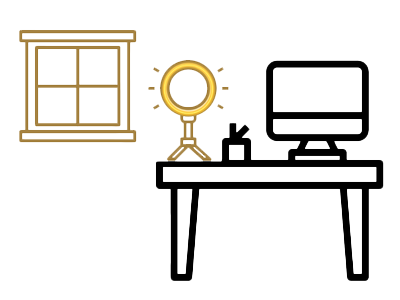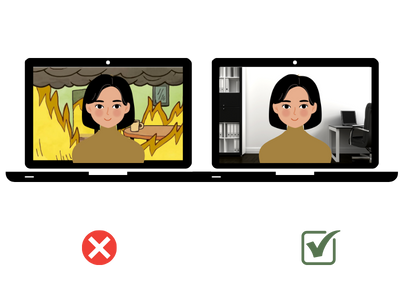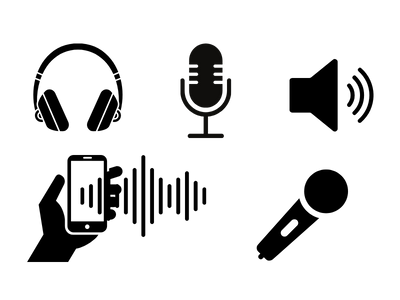Let’s be honest: You didn’t get into fund management to be on camera. But here you are... hosting webinars, giving market commentary, filming pitch videos, or updating investors via Zoom. And the truth is: video works. It builds trust. It increases visibility. And when done well, it makes you look like the kind of pro someone wants to give money to. The problem? Most fund managers weren’t trained to be on screen. So here’s your no-fluff, high-impact guide to showing up sharp on camera—without hiring a production crew or filming in a fancy studio.

Stand Up (Or Sit Up Straight)
- Standing naturally adds energy and authority. It helps your gestures and voice flow better.
- If you’re sitting, plant your feet and sit tall. No slouching.

Look at the Lens
- Not your screen. Not the thumbnail of yourself. Not the chat box. The lens. That tiny black dot is where your audience is.

Frame Yourself Like a Pro
- Use the rule of thirds: The camera should place your eyes in the upper third of the screen.
- Leave more space below your chin than above your head. No one needs to see your ceiling fan.

Light the Star (That’s You)
Lighting Tips for Indoors
- Face the light: Sit or stand facing a window, never with it behind you.
- Avoid overhead lights: These create unflattering shadows.
- Use a ring light: Great for consistent, soft lighting.
- Use lamps if needed: Bounce light off walls for a softer effect.
- Eliminate shadows: Ensure your whole face is evenly lit.
Lighting Tips for Outdoors or Natural Light
- Use shade or overcast conditions for soft, even light.
- Avoid backlighting: Never face away from the window or sun.
- Golden hour (early morning/late afternoon) gives warm, flattering light.
- Natural light from a window works as a free and flattering ring light.

Background Check
Your background shouldn’t steal the show.
- No virtual backgrounds or blur filters
- Clean up clutter: cords, papers, dishes, mystery piles
- Avoid things “growing” out of your head (lamps, plants, taxidermy)
- Bookshelves, clean walls, or a lone plant off to the side work great

Get Your Audio Right
Bad audio ruins good video.
- Skip the laptop mic
- Use wired earbuds, a lav mic, or something like the Hollyland Lark M1
- Do a test recording first. Check for echoes or hums.

Zoom Setup Tips
- Camera quality matters: Built-in laptop webcams create grainy video. Upgrade to a Logitech C920 or Brio for crisp, clean video.
- Use LogiTune (free software) to adjust your webcam framing, lighting, and sharpness.
- Use a wired Ethernet connection for stronger, more stable video quality with fewer dropouts. Wi-Fi can lag—especially with others online.
- Local recordings result in higher quality than recording to the cloud: Ensure you have at least 4GB available on your computer though. (Otherwise, record to the cloud.)
-
To ensure a stable connection to the Zoom app, close out of all other applications you may have open on your computer when you record.
-
In Zoom Settings / Video & Effects, select the FaceTime HD Camera option and make sure HD video is turned on.

Test Before You Press Record
Record a 15-second clip. Watch it back. Ask yourself:
- Can I hear myself clearly?
- Am I evenly lit?
- Is my background distracting?
- Are my eyes in the right spot?
- Fix anything off before the real thing.

Interview-Style Videos
If you’re recording a conversation:
- Make sure both people are lit, framed, and audible
- Avoid interruptions—overlapping audio is tough to fix
- In Zoom, choose:
- Speaker View for focus on one person at a time
- Gallery View for side-by-side convos
- Want both options? Spotlight both speakers and record locally

Editing-Friendly Camera Presence
Before you speak: smile and hold still for 3 seconds.
- After you finish: do it again.
- Why? It gives clean cuts for editing and avoids ending on a weird mid-blink face
FAQ: Video Best Practices for Fund Managers
Q: What kind of videos should a fund manager create?
A: Webinars, quarterly updates, market commentary, founder interviews, or “letter from the PM” recaps. Start with what your audience asks for most.
Q: Is it OK to use Zoom for marketing videos?
A: Yes—especially if you follow these best practices. Just record locally, spotlight yourself, and use an external mic and camera.
Q: What’s the best mic for beginners?
A: A wired lav mic or plug-and-play option like the Hollyland Lark M1 are affordable and solid.
Q: Should I hire a videographer?
A: Only if you’re doing something polished like a brand film. For updates and commentary, DIY is fine—as long as the quality is good.
Q: Can I use a blurred background?
A: You can… but it often looks artificial. A real, tidy setup builds more trust.
Q: What’s the ideal video length?
A: For LinkedIn or email: 1–3 minutes. For webinars or updates: up to 20–30 minutes, but make sure the value is there. Want to look polished and trustworthy on camera? Start with lighting, sound, and presence. Nail the basics and your audience will stay tuned.
